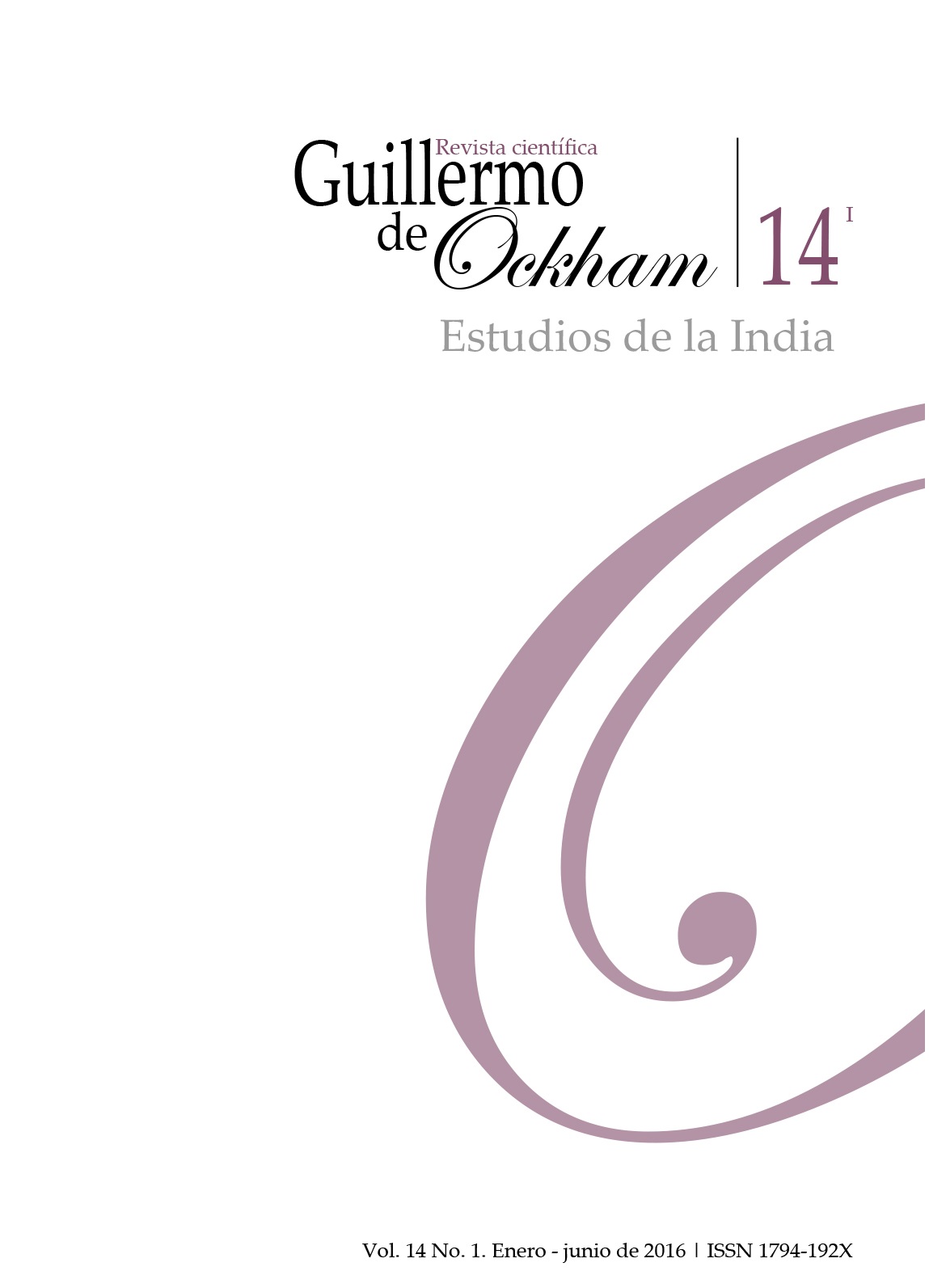The Revista Guillermo de Ockham provides an immediate and open access to its content, based on the principle of offering the public a free access to investigations to provide a global interchange of knowledge.
Unless otherwise established, the contents of this journal has a license with Creative Commons Attribution-NonCommercial-NoDerivatives 4.0 International (CC BY-NC-ND 4.0) http://creativecommons.org/licenses/by-nc-nd/4.0/
- Attribution: You must give appropriate credit, provide a link to the license, and indicate if changes were made. You may do so in any reasonable manner, but not in any way that suggests the licensor endorses you or your use.
- NonCommercial: You may not use the material for commercial purposes.
- NoDerivatives: If you remix, transform, or build upon the material, you may not distribute the modified material.
- No additional restrictions: You may not apply legal terms or technological measures that legally restrict others from doing anything the license permits.
Abstract
La historia religiosa del sur de Asia ha contado con la presencia de distintos grupos de renunciantes y yoguis. De entre ellos, una pieza crucial ha sido el grupo de ascetas comúnmente conocido como Nāth Panth o Nāth Yoguis. Su relevancia deriva tanto de su participación en la historia premoderna y moderna de la política en el sur de Asia, como de sus contribuciones para con la formación del panorama cultural y religioso de las sociedades surasiáticas. El presente ensayo se propone revisar algunos aspectos y problemáticas relativas a la identidad nāth. Así, cuestionará lo que significa ser un yogui, un nāth, y se referirá a fuentes originales para examinar qué dicen al respecto, además de considerar las herramientas textuales y aproximaciones posibles para realizarlo.
References
Barthwal, P. (1994). GorakhBāṇī. Hindī sāhitya sammelan: Allahabad.
Bhattacharyya, N. N. (1996). Ancient Indian Rituals and their Social contents. Delhi: Manohar.
Briggs, G. W. (2001). Gorakhnāth and the Kānphaṭa Yogīs. Motilal Banarsidas: Delhi/Varanasi/Patna.
Bouy, C. (1994). Les Nātha-yogin et les Upaniṣads. Étude d’histoire de la littérature hindoue. Paris: Editions de Boccard.
Champion, C. (1995). Entre la caste et la secte: un kissa du repertoire des BharthariJogi musulmans de la región de Gorakhpur. In M. L. Reiniche & H. Stern (Eds.), Le ruse du salut. Religion et politiques dans le monde indien, Puruṣārtha 17 (pp.25-42). Paris: Editions de l’Ecole des hautes Etudes en Sciences Sociales.
Dvivedi, H. (1996). Nāth-Sampradāy. Lok Bhāratī Prakāśan: Ilāhābād.
Dvivedi, H. (2004). Kabir’s Place in Indian Religious Practice. In D. Lorenzen (Ed.), Religious Movements in South Asia, 600-1800 (pp.269-87). Oxford/NY/Delhi: Oxford University Press.
Ernst, C. (2005). Situating Sufism and Yoga. Journal of the Royal Asiatic Society, 15(1), 15-43.
Ernst, C. (2007). Accounts of yogis in Arabic and Persian historical and travel texts. Jerusalem Studies in Arabic and Islam, 33, 409-26.
Ernst, C. (2012). A Fourteenth-Century Persian Account of Breath Control and Meditation. En D. G. White (Ed.), Yoga in Practice (pp.133-139). Princeton: Princeton University Press.
Gold, D. (1987). The Lord as Guru. Hindi Sants in North Indian Tradition. NY/Oxford: OUP.
Gold, D. (1992). Ascenso y caída del poder de los yoguis: Jodhpur 1803-1842. Estudios de Asia y África, 27(1), 9-27.
Gold, D. (1995).The Instability of the King: Magical Insanity and the Yogi’s Power in the Polictis of Jodhpur. En D. Lorenzen (Ed.), Bhakti Religion in North India (pp.120-132). Albany, NY: State University of New York Press.
Goswamy, B. N., & Grewal, J. S. (1967). The Mughals and the Jogis of Jakhbar. Simla: Indian Institute of Advanced Study.
Khan, D. (2000). Conversation Between Guru Hasan Kabiruddin and Yogi Kahipa: Tantra revisited by isma’ili Preachers. In D. G. White (Ed.), Tantra in Practice (pp.285-95) Princeton: Princeton University Press.
Lorenzen, D. N. (1996). Praises to a Formless God. NY, Albany: SUNY.
Lorenzen, D. N. (2011). Religious Identity in Gorakh and Kabir: Hindus, Muslims, Yogis, and Saints. In D. Lorenzen & A. Muñoz (Eds.), YogiHeroes and Poets. (pp.19-49). Albany, NY: State University of New York Press.
Mallinson, J. (2011). Nāth Sampradāya. Brill Encyclopedia of Religion. Leiden: Koninklijke Brill.
Mallinson, J. (2012). The Original Gorakṣaśataka. En D.G. White (Ed.), Yoga in Practice (pp.257-272). Princeton: Princeton University Press,
Muñoz, A. (2011). Yoguis y sufíes: diálogos indoislámicos, Humania del Sur, 6(10) 97-111.
Pinch, W. (2012). Nath Yogis, Akbar, and Balnath Tilla. In D. G. White (Ed.), Yoga in Practice (pp.273-88). NJ: Princeton University Press.
Prasad, P. (1990). Sanskrit Inscriptions of Delhi Sultanate, 1191-1526. Delhi: Oxford University Press.
Sarkar, J. N. (1985). A Study of Sufism. Its background and syncretic significance in Medieval India. Indo-Iranica, 38(1-2), 1-24.
White, D. (2009). Sinister Yogis. IL: The University of Chicago Press.
Yogabīja. (1982; V.S. 2039). Ed. RāmlālŚrīvāstav. Gorakhpur: Gorakhnāthmandir.
YogaBija. (1985; V.S. 2042). Edited and translated by M.M. Dr. BrahmamitraAwasthi. Delhi: Swami Keshananda Yoga Institute.
































